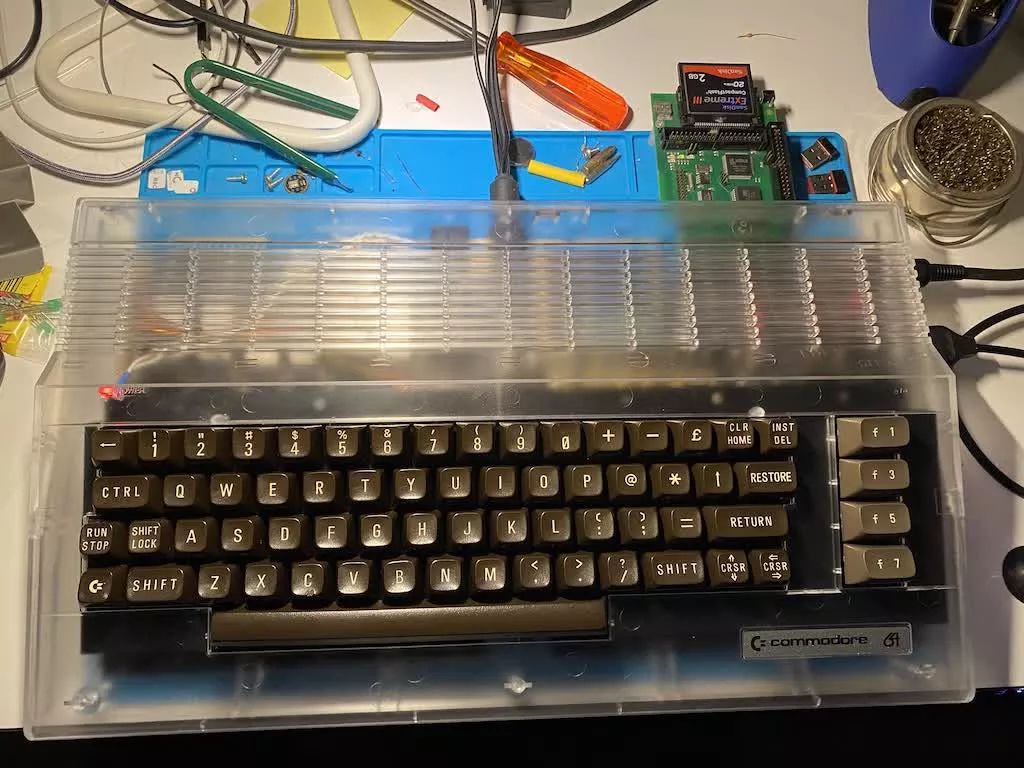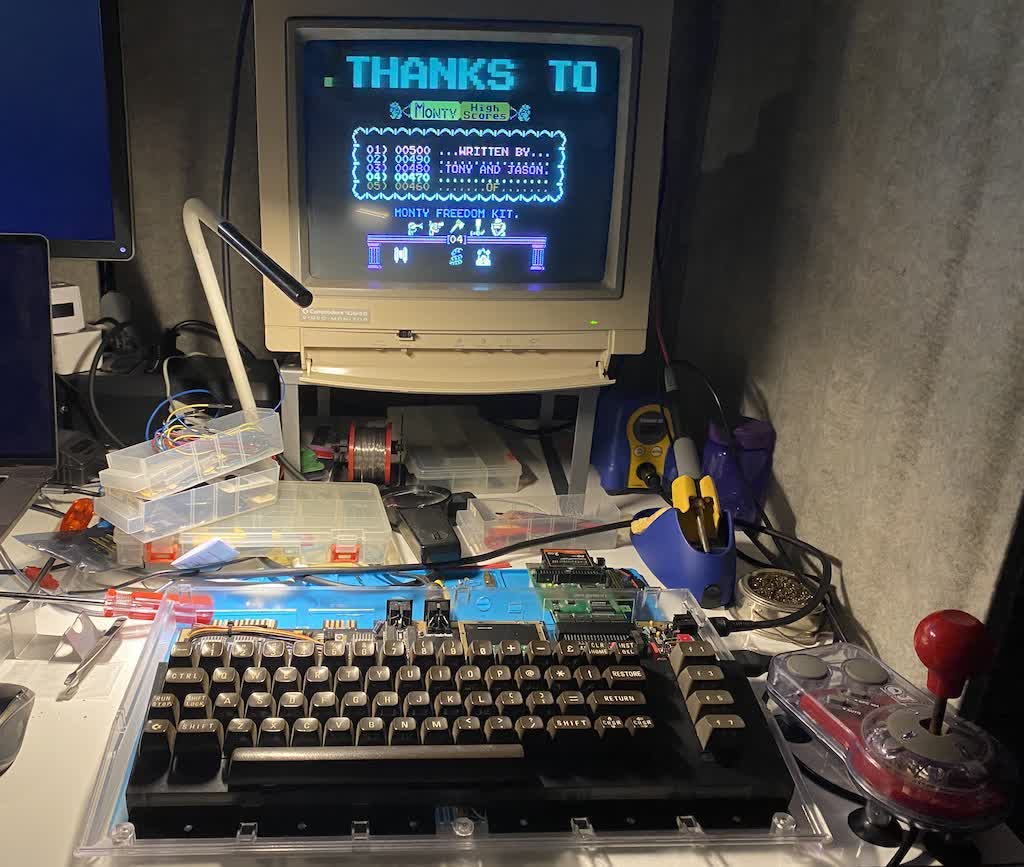WTF?! The Commodore 64, thee top-selling home desktop computer of all time, remains beloved 40 years after its debut. An enduring sign of its popularity is the devotion seen in users who maintain C64 hardware and software today. A homebrew project to rebuild the system showcases this community's depth.

A modder has successfully built a brand-new, functioning Commodore 64 using mostly new components. The project's documentation contains useful information for those interested in repairing or otherwise investigating the system's hardware.
Modder Celso Martinho assembled a replica C64 almost from scratch to test his mastery of the retro computer. Not stopping at rebuilding the system as it was in 1982, Martinho resolved to use as much new material as possible and make his "Frankenstein 64" easily repairable.
The circuit board, resistors, capacitors, passive semiconductors, board connectors, common logic chips, and IC sockets are all new. Most of the new parts came from a Commodore 64 parts kit users normally buy to repair old systems.
For a few other components, Martinho found modern substitutes. He used an alternative for the C64's programmable logic array – which connects its processor to its memory – because it's one of the parts that usually dies with age. It's also a part that another modder previously reverse-engineered, so users can build new models today.
Martinho did something similar for the C64's sound chip and the Philips monitor's power switch. Furthermore, newer substitutes for the power supply are safer than the original.

Enthusiasts can buy modern replacements for the C64 case because someone discovered the original molds in 2014. Multiple colors are available today, and Martinho chose the transparent version.
Some parts, however, are no longer in production and can thus only be found in old hardware. Martinho either purchased these online or salvaged them from his old, non-functioning C64s.
These include two MOS 6526 Complex Interface Adapters, the C64's MOS 6569 Video Interface Chip II (VIC-II) graphics chip, eight 4164 DRAM chips, a Motorola MC4044, and the C64's MSO 6510 CPU. FPGA-based substitutes exist for the VIC-II, but Martinho doesn't consider them ready for prime time.
The project also involves three ROM chips without modern replacements: two MOS 2364 ROMs for the Basic interpreter and the Kernal operating system, and a MOS 2332 character set ROM. For these, Martinho burned original C64 ROM dumps into EPROMS. He also pulled and cleaned the keycaps from an original C64 keyboard.
Unfortunately, the Frankenstein 64 didn't produce a playable image the first time Martinho booted it up. After months of trial and error, he fixed the problem by replacing the 74LS193 divider. Finally, Martinho tested the system with a diagnostic cartridge which ran flawlessly, as did all the games he played on it.
Casual users planning to revisit the C64 will likely want to buy Retro Games Ltd's 2019 re-release. It comes with all the original's basic functionality, 64 pack-in games, a USB port for loading new games and firmware (including homebrew software), and an HDMI output for modern displays.
https://www.techspot.com/news/97148-someone-built-commodore-64-mostly-new-parts.html